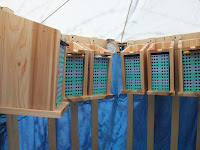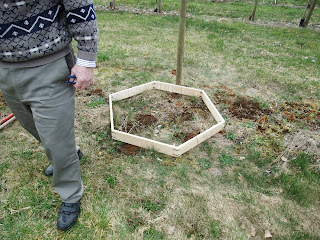This morning Ron W. emailed me some great questions.
I am a bit confused on the subject of timing my bees emergence with my fruit tree blossoms.
Yes, the ultimate goal is for bees to emerge with fruit tree blossoms. This is the easiest if the weather continues to be warm as we head into spring. If periods of cold or rainy weather occur during spring, life expectancy of the bees can be short lived and pollination can grind to a halt.
My trees are just beginning to flower, but it still cold outside. Is it too early to force them to emerge by warming the cocoons indoors?
If the weather stays cold and rainy it is definitely too early to warm them up. The problem with warming them up is that the emerged bees need food in the next few days. If they cannot forage for food, the bees may starve.
I understand that 75 deg F will allow them to emerge within about 4 days. But, do I want to put them outside after emergence with temps still in the upper 30s at night, and upper 50s during the day? Yes, this is the problem. Once they have emerged, bees have to be set outside no matter what the weather is up to. Their longevity in cold temperatures and without food depends on their stored fat bodies- from the previous year's development.
What do I use to let them emerge in, while indoors? I see you sell emergence shelters. As they are emerging, can the first to emerge just stay in the shelter (or box?) while I wait for the rest to emerge, or do they need to be released immediately as they emerge? I usually set the emergence shelter with cocoons inside my home at 65- 70C for a day prior to setting them out. The emerged bees, will be inside the emergence shelter until released the next morning. Of course I take the risk that if it rains ( or is very cold) for a week, I will loose the emerged bees. I find the emergence shelter the most useful emergence tool because it is bee- tight. I usually set out 1/4 of my cocoons out at the time, with 5-7 day gap between emergence. This way, some batches may be lost due to the weather, but unlikely that all four batches will be lost due to bad weather.
As an alternative to trying to out-fox the weather set cocoons out in a predator proof container late winter, and let nature do its thing.
This latter method is definitely the one that I would recommend if you have less than 30 cocoons.
Margriet




































